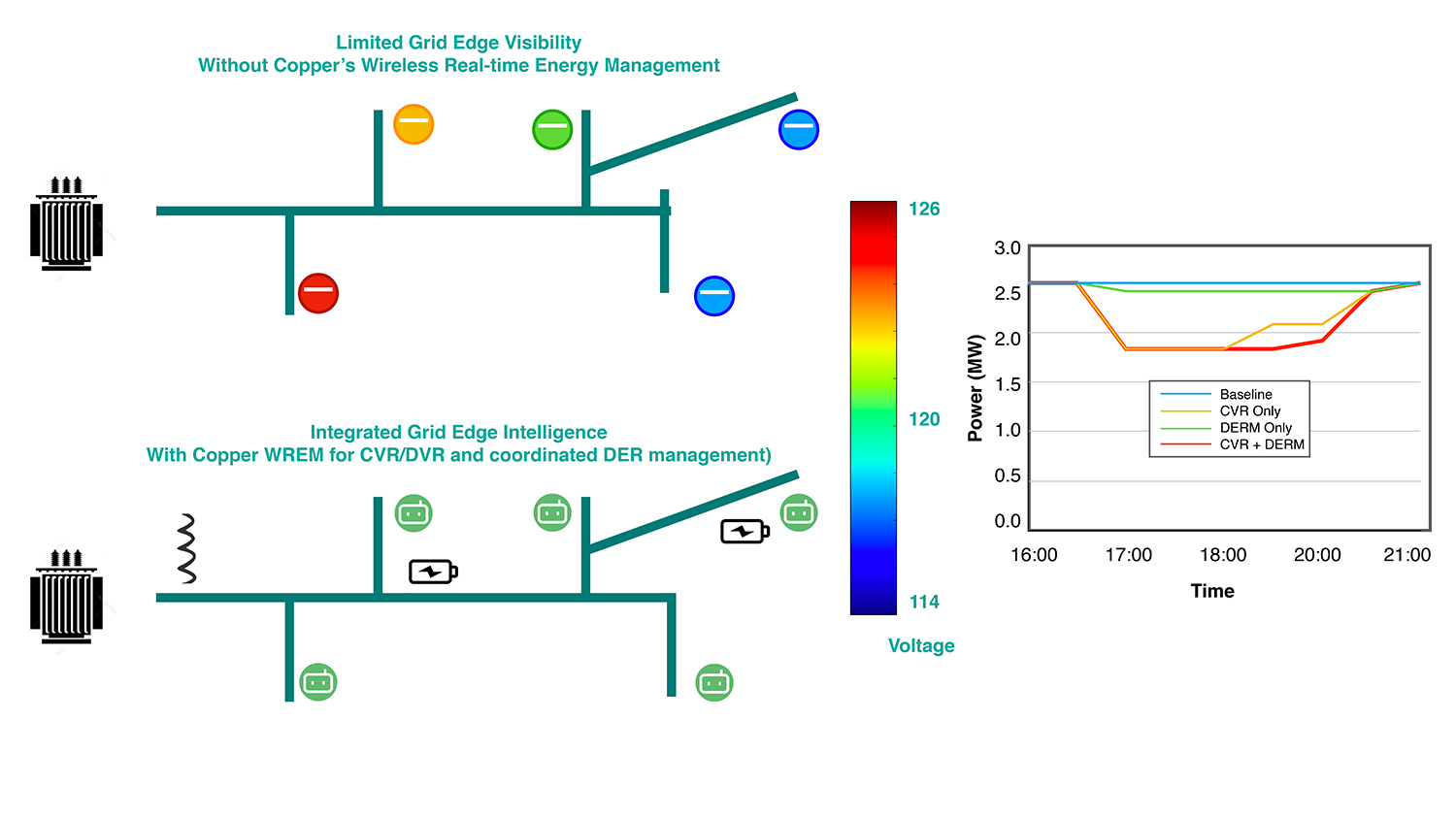Investing in real-time grid-edge intelligence can help utilities gain the most value from fixed assets and an increasingly dynamic energy delivery system.
For the first time ever, distributed energy resource (DER) deployment outpaced that of centralized generation in 2020. While pandemic-related challenges are likely to slow DER deployment this year, new global DER capacity deployments are expected to continue to exceed the deployment of new centralized generation due to declining technology costs, new business models and an increased focus on clean energy investments. Anticipating that trend to continue, our nation’s utilities need improved grid intelligence to deliver safe, reliable energy into our homes, schools and places of business.
Enter wireless real-time energy management (WREM). WREM is a cohesive toolset that empowers utility program managers looking to close the gap between grid need and consumers’ energy demand by providing behind-the-meter (BTM) insights. Not only is this more granular knowledge necessary for utilities seeking to improve customer engagement efforts in real time, but it also results in more meaningful grid impacts enabled by the ability to maximize the use of variable renewables and other flexible sources to stabilize the grid.
Balancing Energy Supply with Demand Management
From increased distributed generation to growing electrification, the range of energy demand and rate of change in a day is growing, creating supply challenges and demand pressures that can lead to system outages. WREM creates an opportunity for utility program managers to flatten the load profile by continuously engaging customers in strategic demand management that shifts the load to other times, ultimately ensuring grid reliability.
How Grid-Edge Intelligence Leads to New Opportunities
Beyond remote meter reading and real-time voltage data, there are a few WREM use cases that help utilities build real-time grid intelligence. From single-system data access for fuel switching research and planning to outage and anomaly detection and advanced conservation voltage reduction (CVR) support, WREM is bringing benefits to utilities and their customers in 2021.
With utilities turning to DERs to generate power at an increasing rate, location and time-of-use rates, as well as power quality, are increasingly important for reliability and managing total cost to serve. As our grid grows increasingly complex, rate structures evolve and generation mixes continue to diversify, utilities can leverage granular real-time data to support solutions, such as CVR, at a low cost and help customers extract more value from managed DERs. Plus, as distributed generation and two-way power flows are further integrated into distribution grids, the risk for overvoltage becomes greater, making CVR increasingly critical.
 Using a network of voltage regulators to manipulate the voltage on distribution circuits to provide voltage levels on the lower end of the acceptable range, CVR reduces the mismatch between voltage levels and significantly limits wasted energy, helping utilities meet their carbon goals while staying in compliance. Additionally, because CVR systems match voltages to the lowest acceptable levels, they’re able to provide energy and demand reductions for utility customers and ease overall distribution system stress, which can be particularly impactful during periods of peak demand and for mitigating demand charges.
Using a network of voltage regulators to manipulate the voltage on distribution circuits to provide voltage levels on the lower end of the acceptable range, CVR reduces the mismatch between voltage levels and significantly limits wasted energy, helping utilities meet their carbon goals while staying in compliance. Additionally, because CVR systems match voltages to the lowest acceptable levels, they’re able to provide energy and demand reductions for utility customers and ease overall distribution system stress, which can be particularly impactful during periods of peak demand and for mitigating demand charges.
Distribution network voltage data allows the voltage regulators to align voltage levels across the network and manipulate the voltage to the lowest acceptable range. Even better, by providing aggregated grid-edge-level voltage data to the substation in or near real time, WREM enables more concise voltage control than 15-minute or 1-hour data intervals, creating energy savings that reduce a utility’s cost to serve.
Finally, by increasing resiliency with anomaly detection and leveraging managed DERs, not just at commercial and industrial scale but by local neighborhoods as well, WREM solutions are able to extract more value from managed distributed energy resources. More frequent data intervals and more accurate voltage data can provide visibility into real-time voltage data at the grid edge, which effectively pushes the voltage reduction even further without violating standards set forth by the American National Standards Institute.
Since utility program managers are currently striving to develop next-generation residential demand-side management programming, WREM has the potential to be an easily scalable and effective solution for utilities. Whether motivating community-level impact or embracing the data streams WREM solutions generate, the transition to a more sustainable energy future requires advanced grid-edge intelligence to help utilities tackle challenges surrounding the recently established two-way power flows generated by DER.
For more information about how WREM empowers both utilities and their customers to harness the clean energy transition with greater personalization, comfort and control, download our white paper, Building Real-Time Grid Intelligence.